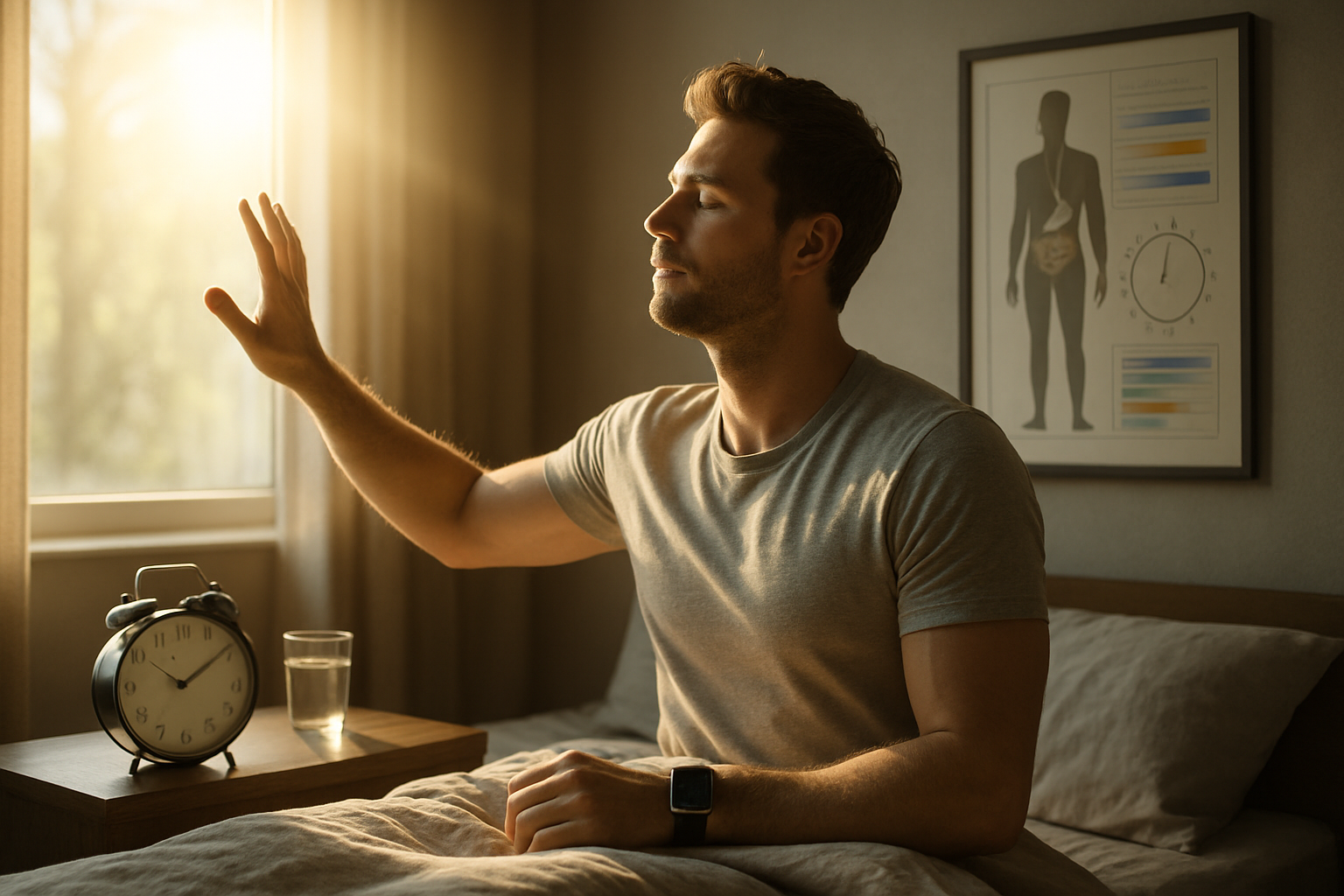Biohacking Your Circadian Rhythm: The New Frontier of Sleep Optimization
Imagine waking up every morning feeling refreshed, energized, and ready to conquer the day. What if you could harness the power of your body's internal clock to achieve peak performance, enhance cognitive function, and improve overall health? Welcome to the world of circadian rhythm biohacking – a cutting-edge approach to optimizing your sleep-wake cycle for maximum well-being.

The Science of Circadian Rhythms
Circadian rhythms are the roughly 24-hour cycles that govern various physiological processes in our bodies, including sleep-wake patterns, hormone production, and metabolism. These rhythms are primarily controlled by the suprachiasmatic nucleus (SCN), a small region in the brain often referred to as our master biological clock.
The SCN receives light signals from our eyes, which help synchronize our internal clock with the external environment. This intricate system has evolved over millions of years to align our bodily functions with the natural light-dark cycle of the Earth. However, modern lifestyle factors such as artificial lighting, irregular schedules, and constant exposure to blue light from electronic devices can disrupt these delicate rhythms, leading to a host of health issues.
The Impact of Circadian Disruption
Chronic disruption of circadian rhythms has been linked to a wide range of health problems, including:
-
Increased risk of obesity and metabolic disorders
-
Higher susceptibility to cardiovascular diseases
-
Compromised immune function
-
Elevated risk of certain cancers
-
Cognitive decline and mood disorders
-
Accelerated aging processes
These findings underscore the critical importance of maintaining a well-regulated circadian rhythm for overall health and longevity.
Biohacking Techniques for Circadian Optimization
Circadian rhythm biohacking involves implementing strategic lifestyle changes and leveraging cutting-edge technologies to realign our internal clocks with natural light-dark cycles. Here are some innovative approaches gaining traction in the biohacking community:
Light Therapy and Wearable Tech
Advanced light therapy devices and wearable technologies are at the forefront of circadian rhythm biohacking. These tools simulate natural light patterns to help regulate melatonin production and reset the body’s internal clock.
Some cutting-edge devices include:
-
Programmable LED light bulbs that mimic the sun’s natural spectrum throughout the day
-
Light therapy glasses that deliver specific wavelengths of light directly to the eyes
-
Wearable sensors that track light exposure and provide personalized recommendations for optimal sleep-wake timing
Chronotype-Based Scheduling
Understanding and leveraging your individual chronotype – your body’s natural preference for sleep and wake times – can significantly improve your energy levels and productivity. Chronotype-based scheduling involves:
-
Identifying your chronotype through genetic testing or questionnaires
-
Aligning your work and leisure activities with your body’s natural peaks and troughs in energy and alertness
-
Optimizing meal timing and exercise routines based on your chronotype
Temperature Regulation for Better Sleep
Body temperature plays a crucial role in regulating sleep-wake cycles. Biohackers are experimenting with various temperature manipulation techniques to enhance sleep quality:
-
Using smart mattress pads that adjust temperature throughout the night
-
Taking hot baths or showers before bedtime to trigger a natural cooling response
-
Wearing cooling headbands or vests designed to lower core body temperature during sleep
Nutrient Timing and Chrononutrition
The timing of nutrient intake can significantly impact our circadian rhythms. Chrononutrition, a emerging field of study, explores how the timing of meals and specific nutrients can influence our internal clocks:
-
Time-restricted feeding windows to align with natural metabolic rhythms
-
Strategic consumption of specific nutrients like protein and carbohydrates at optimal times of day
-
Using supplements like melatonin and magnesium to support natural sleep-wake cycles
The Role of Technology in Circadian Biohacking
Advancements in wearable technology and smartphone apps are making it easier than ever to track and optimize circadian rhythms:
-
Sleep tracking apps that analyze sleep patterns and provide personalized recommendations
-
Smart home systems that automatically adjust lighting and temperature based on individual circadian profiles
-
AI-powered virtual assistants that offer real-time guidance on optimal times for work, exercise, and relaxation
Circadian Rhythm Hacks for Optimal Well-being
-
Expose yourself to bright natural light within the first hour of waking
-
Establish a consistent sleep schedule, even on weekends
-
Avoid blue light exposure at least 2 hours before bedtime
-
Create a cool, dark sleeping environment
-
Practice relaxation techniques like meditation or deep breathing before bed
-
Consume your last meal at least 3 hours before sleep
-
Exercise regularly, but avoid intense workouts close to bedtime
-
Consider using red light therapy in the evening to promote melatonin production
As we continue to unravel the complexities of our internal clocks, circadian rhythm biohacking offers a promising path to enhanced health, productivity, and overall well-being. By aligning our daily routines with our natural biological rhythms, we can tap into our body’s innate wisdom and unlock our full potential. While the field is still evolving, the growing body of research and innovative technologies in this area suggest that circadian optimization could be the next frontier in personalized health and performance enhancement.





